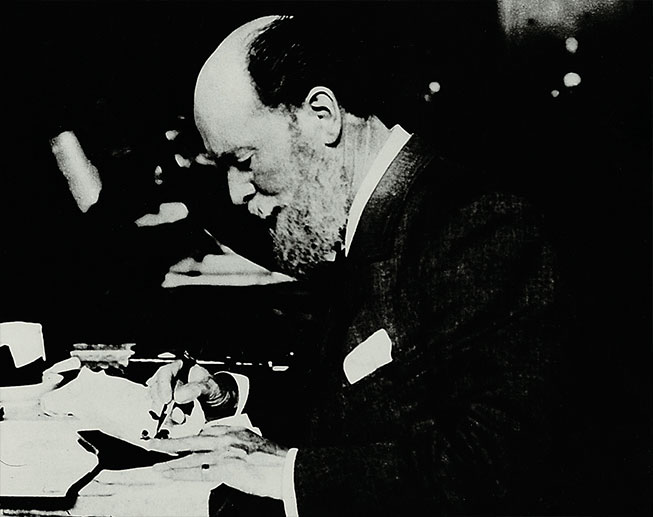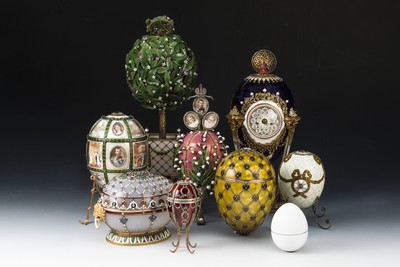The House of Fabergé came into existence in 1842, when Gustav Fabergé, a merchant from the city of Parnau (today Pärnu), opened a small jewelry workshop and store in the Admiralty District of St. Petersburg. Like many jewelers at the time, Gustav Fabergé had long wanted to establish himself in the capital of the Russian Empire. 1846 saw the birth of his son Carl, who would go on to take the helm of the family firm and turn it into a world-famous company. Gustav Fabergé had it clear in his mind that the future head of the family business should receive comprehensive training, so he sent his son off on a Grand Tour of Europe. There, Carl underwent tutelage at all the major centers of jewelry art, where he picked up many ideas that he later saw through at the House of Fabergé. It is no accident that his contemporaries called him a scientific and educated jeweler: he was engaged in research and restoration, and for many years after 1867 studied and touched up jewelry objects of different eras in the collection of the Imperial Hermitage.

Carl Fabergé at work. St. Petersburg, 1900s. Photo by G. Eberg.
Carl began running the firm in 1872. In 1885, Carl Fabergé was appointed Supplier to the Imperial Court, and five years later was named Appraiser to the Cabinet of His Imperial Majesty. The last two decades of the 19th century saw the House of Fabergé attain global recognition, and Carl received several foreign awards and the appointment of supplier to many European monarchs.
The House of Fabergé had branches in Moscow (opened 1887), Odessa (opened 1901), London (opened 1903) and Kiev (opened 1906). The main workshop, flagship store and head office were all located in Carl Fabergé's own home at 24 Bolshaya Morskaya Street in St. Petersburg. It also contained a studio for designers, a specialized library, Carl Fabergé's own fashionable apartment and the jewelery workshops, whose activities the master artisan could supervise personally.
The firm employed the best jewelers in St. Petersburg, among them Mikhail Perchin and his successor Heinrich Wigström, whose workshop produced the Imperial Easter eggs. The firm's workmaster for silver was Julius Rappoport. Such prominent silver- and goldsmiths as Erik Kollin, Johan Victor Aarne and August Holmström worked at the firm, as well as the miniature artists Vasili Zuev and Johannes Zeingraf, and the sculptors Boris Fredman-Clouzel and Georgi Savitsky. The head 'artist-composer' (designer) at the firm was Carl's brother Agathon, succeeded after his death in 1895 by Franz Birbaum. Famous Russian artists and architects also collaborated with the firm, among them Valentin Serov, Alexandre Benois and Fyodor Schechtel. The list goes on.
At its peak at the turn of the 20th century, the House of Fabergé had over 500 people in its employ. Over the course of its existence (1842-1918), it produced approximately 300,000 objects, all of which were executed at the highest level of craftsmanship; many of them were unique and brought global fame to the firm and, through it, to Russian jewelry art. Its clientele comprised practically all the European monarchs and their relatives, as well as prominent politicans, businesspeople and artists.
Carl Fabergé faced great hardship during the First World War. Many of his master artisans were drafted into the army. After the October Revolution, the House of Fabergé ceased production. The new government destroyed the firm and executed the Romanovs, its chief clients. In 1918, Carl Fabergé fled the country using false documents listing him as a courier for the British Embassy. He died in Lausanne two years later, and was buried at the Cimetière du Grand Jas in Cannes.
